What do some of the greatest technological breakthroughs and innovations have in common? Brilliant, creative minds? Hours and hours of work? There is another common, and arguably under-credited, factor: NATURE.
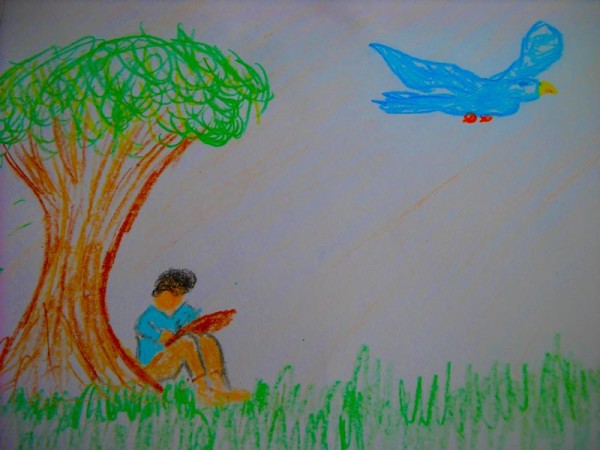 Rewind history to a young boy sitting in the grass watching the birds fly about in a cool afternoon breeze. The boy studies these birds intently, sketch book in hand, trying to capture their essence. The boy is trying to capture the secret that lets these little creatures defy gravity. This boy’s name is Leonardo da Vinci, and while he will never successfully create a “flying machine” he is one of the first innovators to tap into the power of biomimetics. 1
Rewind history to a young boy sitting in the grass watching the birds fly about in a cool afternoon breeze. The boy studies these birds intently, sketch book in hand, trying to capture their essence. The boy is trying to capture the secret that lets these little creatures defy gravity. This boy’s name is Leonardo da Vinci, and while he will never successfully create a “flying machine” he is one of the first innovators to tap into the power of biomimetics. 1
Fast forward to 1903 and the Wright brothers are celebrating their first flight; part of their creative process was also the study of birds. 2 Biomimetics now has one of its first success stories.
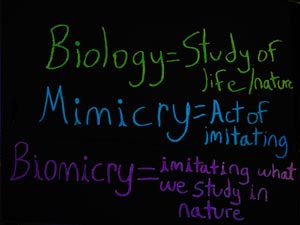 Biomimetics, also referred to as biomimicry, is all about recognizing that over millions of years organisms have refined a wealth of adaptive abilities. When humans go to tackle new problems, the first question to ask is: has nature already come up with a solution?
Biomimetics, also referred to as biomimicry, is all about recognizing that over millions of years organisms have refined a wealth of adaptive abilities. When humans go to tackle new problems, the first question to ask is: has nature already come up with a solution?
As scientists spend more time mulling over this question, the answer is increasingly yes.
Flight is a perfect example. Before humans ever started pondering how they could fly, birds were soaring the air. So when the time came to invent the first airplane, no one needed to invent anything new; it was simply a matter of copying what nature had already perfected.
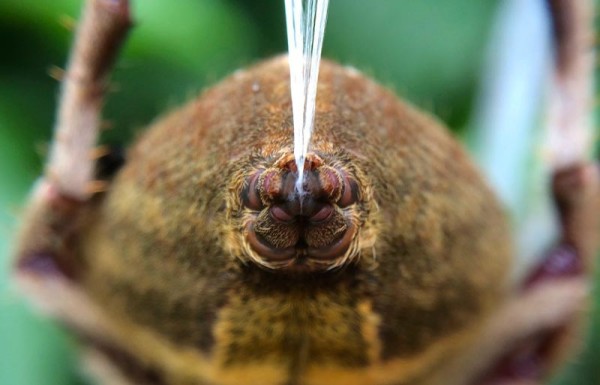
 The impressive adaptations of many animals are humbling to the pride of human innovation. Spider silk, a composite weave of seven types of silk, is five times stronger by weight and vastly more ductile than high-grade steel.
The impressive adaptations of many animals are humbling to the pride of human innovation. Spider silk, a composite weave of seven types of silk, is five times stronger by weight and vastly more ductile than high-grade steel.
The abalone’s shell is synthesized entirely from calcium carbonate, the same stuff as sidewalk chalk, but the manner in which these simple molecules are arranged gives the abalone shell a toughness that competes with Kevlar armor. 3
Meanwhile, certain butterfly wings are composed of tiny crystals arranged to reflect specific spectrums of light, giving off color without pigment or the need to expend energy; this inspired the development of Mirasol, screen display technology that uses a tenth of power of traditional LCD displays. 4
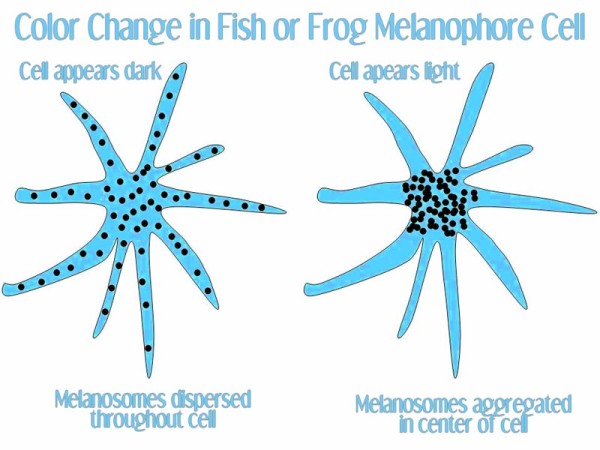 How about changing the colors of our clothes? Fish and frogs can do it. The list can go on, but I believe there is an even more striking element to the growing field of biomimetics. What if studying nature can lead us beyond more cool things, but also to the answers to some of humanity’s complex environmental problems? Biologist Tim McGee poses the question this way:
How about changing the colors of our clothes? Fish and frogs can do it. The list can go on, but I believe there is an even more striking element to the growing field of biomimetics. What if studying nature can lead us beyond more cool things, but also to the answers to some of humanity’s complex environmental problems? Biologist Tim McGee poses the question this way:
“Everyone’s talking about ways to reduce the human footprint, or to get to “net zero” impact. But nature usually goes one step further: It’s almost never net zero—the output from that system is usually beneficial to everything around it. What if we could build our cities the same way? What if, in New York City, when it rained, the water that went into the East River was cleaner than when it fell? And what if, when forests caught fire, the flames could be extinguished by means that didn’t depend on toxic substances? Nature creates flame-retardants that are nontoxic. Why can’t we?” 5
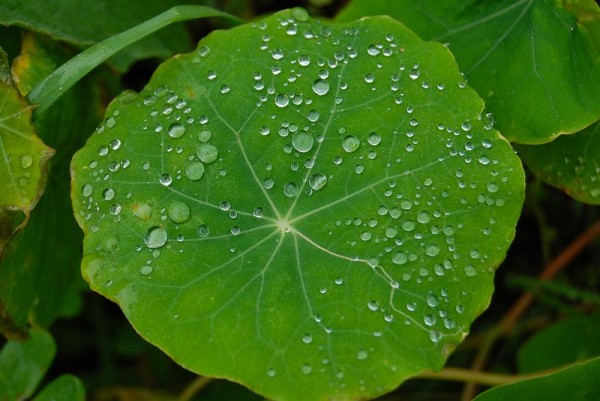
 There are a few hopeful breakthroughs worth noting. Following the design of lotus petals, GreenShield has developed an alternative form of stain resistance that requires fewer chemicals to produce. 6
There are a few hopeful breakthroughs worth noting. Following the design of lotus petals, GreenShield has developed an alternative form of stain resistance that requires fewer chemicals to produce. 6
Carbozyme Inc. is currently studying the CO2 absorption capacity of lungs to develop filters for carbon emissions.
Similarly, research on mollusks has developed methods of transforming CO2 into limestone, which can be stored or used for construction. 7 Additionally, studies of animal herd behaviors in the wild inspired Allan Savory’s method of biomimetic grazing, which presents a more sustainable model of agriculture that maintains soil quality, fosters biodiversity, and decreases desertification. 8
While it is amazing to see what kind of applications humanity can derive from the technological blueprints hidden in nature, it is important to recognize that biomimetics goes beyond developing the newest, coolest things. Nature is a complex web of diverse organisms that coexist, a self-regulating system that maintains the delicate balance of life.
Perhaps the ultimate outcome of humanity’s study of nature, this constant pursuit of biomimicry, is to better integrate humanity into this web of interconnected organisms. Perhaps humanity can achieve a harmonious balance with nature rather than disrupt it.
At High Trails, we talk about learning how we can all live together on one healthy planet, challenging students to look beyond the norms of urban life as they explore and observe nature in action. This message is further empowered by the growing exploration of biomimetics. Observing nature is more than interesting or neat; it may one day empower humans to solve the problems facing future generations.

I think Alex is practicing biomimicry here. Or putting on gloves. Or going back to verbal jiu-jitsu. Ummm…
At High Trails Outdoor Science School, we literally force our instructors to write about elementary outdoor education, teaching outside, learning outside, our dirty classroom (the forest…gosh), environmental science, outdoor science, and all other tree hugging student and kid loving things that keep us engaged, passionate, driven, loving our job, digging our life, and spreading the word to anyone whose attention we can hold for long enough to actually make it through reading this entire sentence. Whew…. www.dirtyclassroom.com
- Romei, Francesca (2008). Leonardo Da Vinci. The Oliver Press. p. 56. ↩
- Howard, Fred (1998). Wilbur and Orville: A Biography of the Wright Brothers. Dober Publications. p. 33. ↩
- Mueller, Tom (2008) Biomimetics: Design by Nature. National Geographic Magazine. ↩
- Vanderbilt, Tom (2012). How Biomimicry is Inspiring Human Innovation. Smithsonian Magazine. ↩
- Vanderbilt, Tom (2012). How Biomimicry is Inspiring Human Innovation. Smithsonian Magazine. ↩
- Biomimicry 3.8 Natural Cleaning: Learning from Lotus Plants How to Clean without Cleaners. AskNature.org ↩
- Biomimicry 3.8 Climate Change: Learning from Human Lungs How to Sequester Carbon. AskNature.org. ↩
- Savory, Allan. (2013). How to green the desert and reverse climate change. <http://www.ted.com/talks/allan_savory_how_to_green_the_world_s_deserts_and_reverse_climate_change.html> TED February 2013. ↩

Comments are closed.